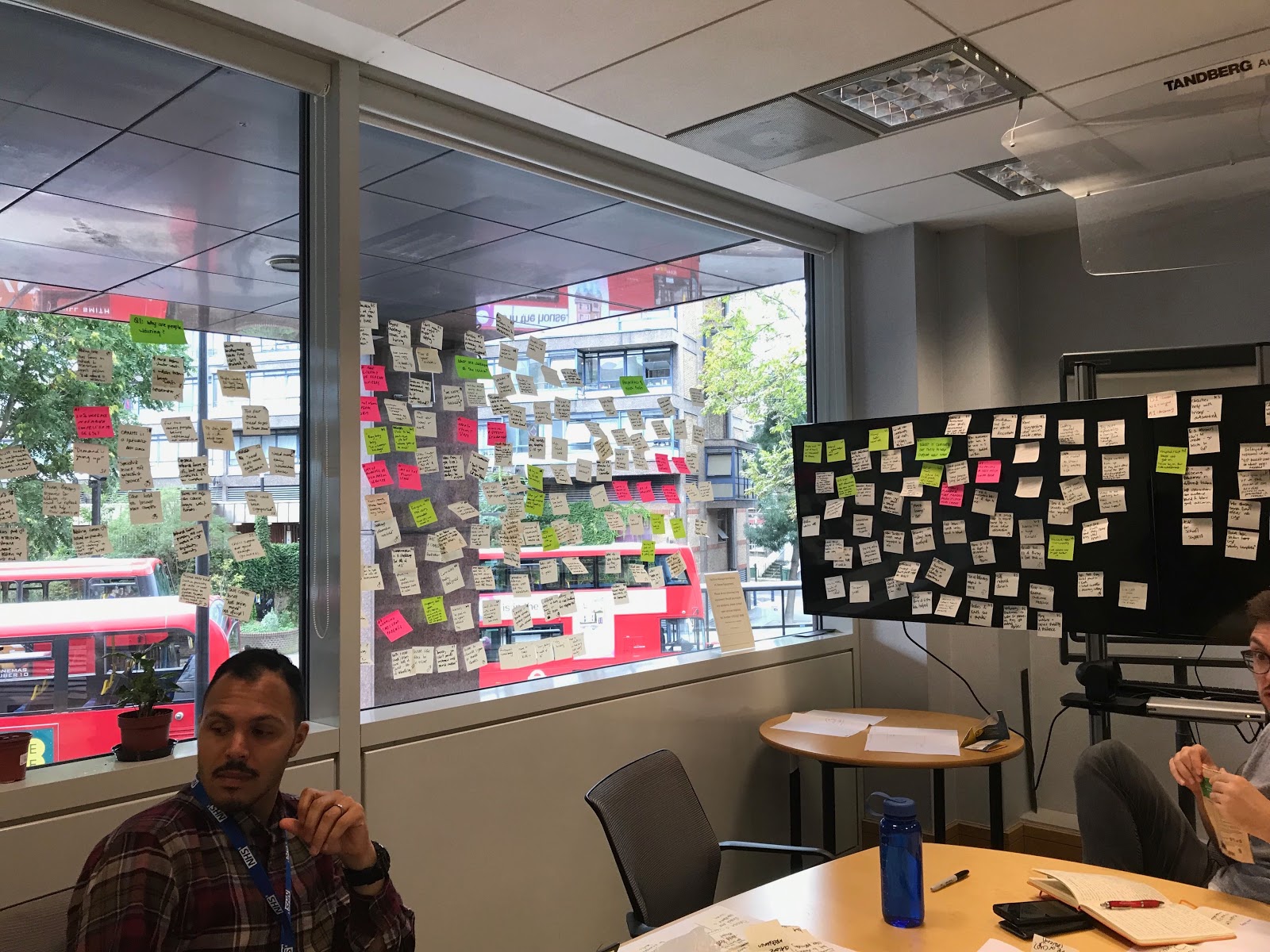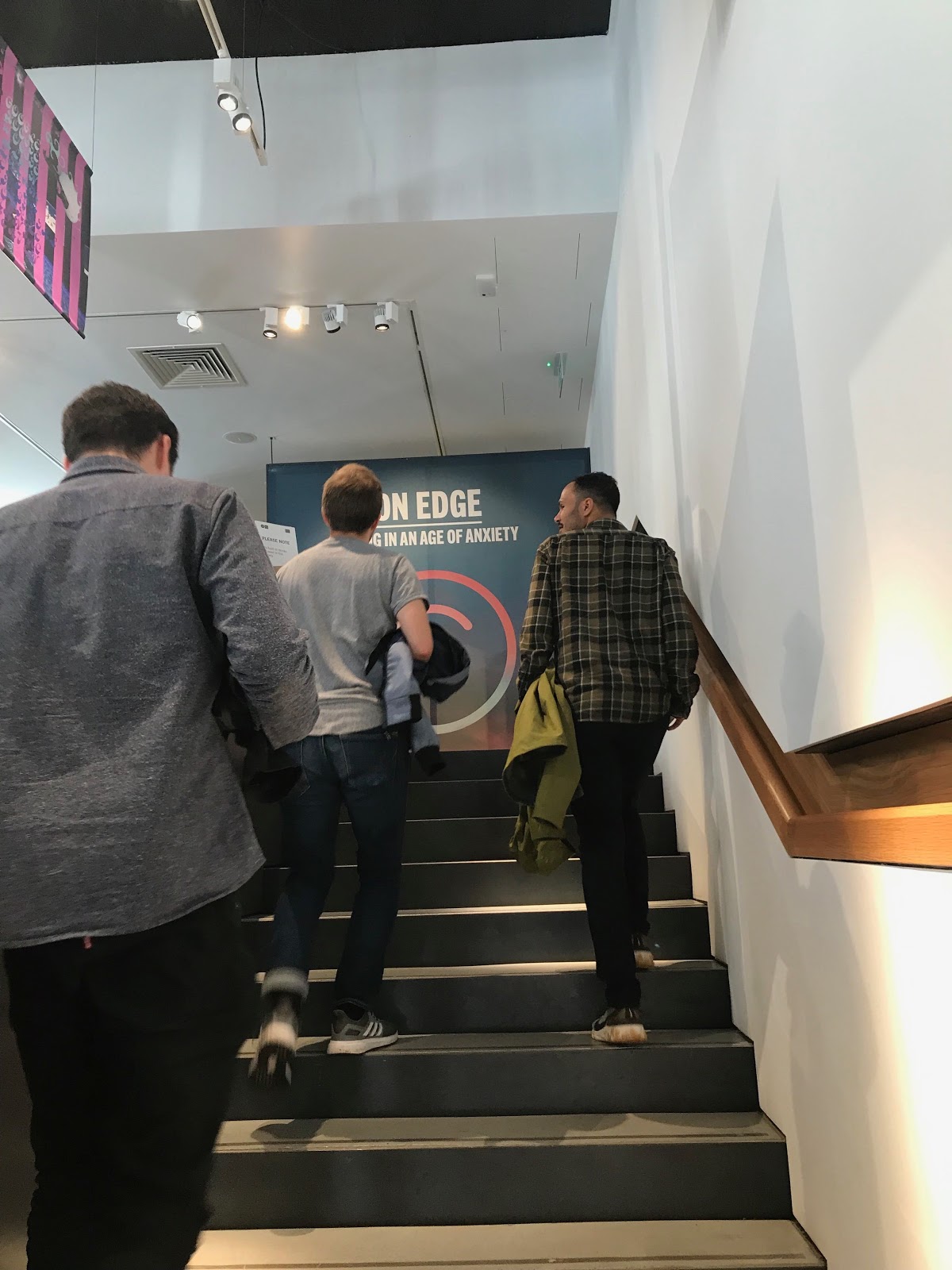NHSX and Mental Health Update 12
This is an informal update to NHSX’s commitment to:
Digital and data specialists from NHSX will team up with NHS England’s mental health national policy teams to help clinicians and policymakers improve patient experience through technology.
This is a selection of things that happened (other things also happened) from team members working on a discovery into children, young people and mental health…
Content Crit
Content crit morning 📝. Looked at 34 artefacts. Letters, forms and leaflets! Very diligent gang 🧠 pic.twitter.com/8h2RCoYO6l
— Colin Pattinson (@ColinPattinson) September 23, 2019
On Monday the team get together and reviewed a bunch of artefacts (e.g. letters and leaflets) that CYPMHS send out. We’ve been collecting them for weeks and it was brilliant to get our hands on real-life examples of items that families interact with. Many thanks to all the colleagues who shared these with us!
The day began with a content design 101 session. The team care about building capability and not everyone is exposed to content design principles day to day. So we all had a quick refresh.
The 101 included (among other things):
- 2014 blog post about why we need to write more clearly
- Shout out to the NHS content style guide!
- GOV.UK A-Z style guide
- Some fave quotes such as “content is more than copy” and “the medium is the message”
- Info on accessible content
Later on in the morning we pulled out the artefacts that users receive from CAMHS while they are waiting. The aim of the content crit was to evaluate the language, design, style, format and quality of the artefacts. We used our knowledge from user research to put ourselves in the shoes of our users and how they’d feel while waiting.
We then took red and green pens to the artefacts. Highlighting what works well and what works less well. The artefacts included:
- Acceptance letters
- Rejection/discharge letters
- Chasing letters
- Referral forms
- Support leaflets
We then shared our reflections from what we had reviewed. Being endlessly constructive about what could be done better. We found:
- they could be made better with some tweaks from someone with a content design perspective
- the medium is typically a letter
- there could be improved signposting
- for some we could test the tone as it may not be appropriate given the context
- we could make tweaks to see if more child-friendly designs work better for our younger users
- we could set expectations better
- we could use less jargon and write more in plain English.
CYPMHS/CAMHS analysis

The team got together to analyse our findings from the CAMHS locations we visited. We looked at interviews with team managers, clinicians as well as survey data.
This analysis was supposed to take place in Round 1, but due to the challenges recruiting during the summer holidays, we had to move this to later on in the Discovery.
What we did
The team put our research questions on the wall and everyone swapped notes and started to stick up the different findings. We made further notes on the feedback from the survey and the 4 week wait event (as mentioned in last week’s weeknotes) and grouped everything into themes.
We sat individually and wrote down our top 6 insights, then played these back to the team.
What we found
Some high level findings included:
- Recruitment and retention are the biggest challenges for CAMHS staff
- Staff are under pressure, there can be low morale and a high turnover. They can feel frustrated with waiting lists as they are doing their best to help.
- Signposting varies between services and there’s uncertainty about the quality of things to recommend.
- There can be inappropriate referrals to CAMHS due to lack of other services meaning CAMHS is often the only option.
Chat with a clinician looking into improving CYPMHS comms
A few of us had a really interesting call with a clinical psychologist who has helped us out during the discovery. They’ve been looking at co-production methodologies with users to improve communication skills between clinicians and children and young people.
Key things that improved comms could help with:
- managing expectations
- communicating clearly and freely
- keeping users updated on progress
We left the call thinking we can definitely share notes and you never know, some extra collaboration could spring out of it.
Mystery trip
As a team we took some time out of the office to build our empathy and understanding of our users by going to On Edge: Living in an Age of Anxiety an exhibition at the Science Gallery at King’s College. The exhibition’s blend of scientific research and art provided us with some insight into people experiencing anxiety and prompted us to collectively reflect on our own experiences.
It had been billed as a mystery trip by one of the team who had hid the location of the trip out. It’s not the usual team bonding activity admittedly but we did get to expose ourselves to relevant and thought provoking displays in preparation for future design/creative tasks next week.
CYP research
We completed our research with children and young people this week. The experience mapping packs were sent back to us in the post and we used these as stimulus in the follow-up interviews via video call and phone. For younger participants, their parent was present too.
We knew that researching with this group would be tricky and there’s definitely a lot of lessons learned:
- The nature of researching with children’s mental health meant we had a lot of users who couldn’t take part in the interview, as their child was having a bad day or didn’t want to talk
- We thought video calls would be familiar and more comfortable with teenagers and young people, but it was challenging carrying out some over the phone
- For this research, there are improvements to make in communicating with participants via a recruitment agency. We provided consent forms via the recruiter and sent out info sheets/instructions in the packs, but it wasn’t easy to set their expectations about what will happen.
- As this was the most challenging user group, we decided to have CYPs in the last round. This meant we had more time for planning and recruitment, but in hindsight carrying out this research first would have allowed more time to reschedule or re-recruit those who didn’t attend
When researching with children and young people, some things we could do differently next time is:
- Over recruit even more!
- When going through a recruiter, it’s difficult to build rapport with the participant in the screening process. We could send out a video clip from our researcher with accompanying consent forms and info sheets, saying who we are and what will happen - this could help to ease participant nerves, help them know what to expect and who they will be talking to
- Try to carry out face to face research where possible
- make sure those without appropriate DBS checks get them before the next phase
- Set out agreements between our team and the recruiter with responsibilities and processes for consent reminders, joining instructions and sending things back to us
- Send out user research plans to wider x-gov community for crit!
- Conduct user research with the primary user group first… this way we have time to iterate our methods as we go
We’ve already received a lot of advice and support in the cross-gov community, thank you to everyone who has helped. If anyone has any tips or guidance we’d love from you to improve our quality of work.
Find out more
If you want to stay informed about wider NHSX work then check out @NHSX on Twitter.
If you want to give us feedback or get in touch with the team then you can do so using this form!
